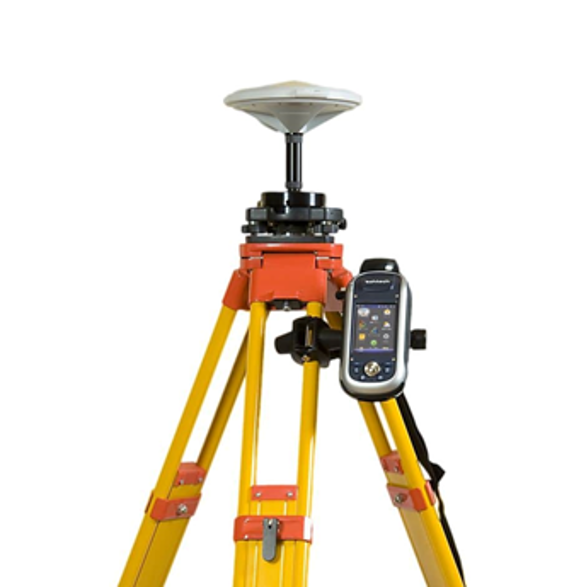
Global Navigation Satellite System (GNSS) receivers have become indispensable components in a range of modern applications, driving significant advancements in precision, performance, and reliability across numerous industries. From geospatial surveying to autonomous vehicles, agriculture to construction, GNSS receivers are at the heart of critical operations that demand accurate positioning and navigation. This article explores the diverse applications of GNSS receivers, their technological impact, and how they continue to shape the future of precision-based industries.
Understanding GNSS Receivers: An Overview
A GNSS receiver is a device that captures signals from multiple satellite constellations, such as GPS (United States), GLONASS (Russia), Galileo (European Union), and BeiDou (China). These signals are used to calculate the receiver’s precise position, velocity, and timing. With multi-frequency and multi-constellation support, modern GNSS receivers are capable of delivering centimeter-level accuracy, making them ideal for both civilian and commercial applications.
GNSS receivers work by comparing the time it takes for signals to travel from satellites to the receiver’s location. By analyzing these time differences, the receiver can determine its exact position on Earth. High-end receivers are equipped with sophisticated algorithms and components that can mitigate errors caused by atmospheric disturbances, signal reflections, and other interference, ensuring optimal performance in even the most challenging environments.
Key Features of Modern GNSS Receivers
Modern GNSS receivers offer a range of features that enhance precision and reliability, enabling them to perform effectively in various demanding conditions. Some of the standout features include:
- Multi-Constellation Support: Using multiple satellite constellations increases the number of visible satellites, reducing the chances of signal loss and improving positional accuracy.
- Multi-Frequency Capability: Advanced receivers can process signals on multiple frequencies, reducing errors caused by ionospheric delays and multipath interference.
- RTK and PPP Technologies: Real-Time Kinematic (RTK) and Precise Point Positioning (PPP) are two techniques that deliver real-time, high-precision positioning. RTK uses a base station to provide correction data to the receiver, while PPP relies on satellite-based corrections, eliminating the need for a local base station.
- Robust Signal Processing: Modern GNSS receivers use powerful signal processing algorithms to filter out noise, handle weak signals, and maintain accuracy in challenging environments such as urban canyons or dense forests.
- Integrated Inertial Navigation Systems (INS): Some high-end receivers incorporate INS to provide continuous positioning information even when satellite signals are obstructed, ensuring seamless navigation.
These advanced features make GNSS receivers ideal for a range of applications where high accuracy, reliability, and performance are critical.
Modern Applications of GNSS Receivers
GNSS receivers have revolutionized various sectors, allowing for unprecedented levels of precision and efficiency. Here’s a look at some of the most significant modern applications:
1. Geospatial Surveying and Mapping
Surveying is one of the most prominent applications of GNSS technology. Modern survey-grade GNSS receivers are capable of delivering centimeter-level accuracy, making them indispensable tools for geospatial professionals. They enable precise land measurements, mapping, and boundary setting, significantly reducing the time and effort compared to traditional methods. Surveyors use GNSS receivers for tasks such as topographic mapping, construction site layout, and property boundary determination.
2. Autonomous Vehicles
In the realm of autonomous driving, GNSS receivers are crucial for providing accurate positioning and navigation data. Autonomous cars, drones, and other vehicles rely on GNSS receivers to determine their exact location and follow predefined routes. Combined with other sensors such as LiDAR and cameras, GNSS receivers help ensure safe and efficient operation in complex environments.
For example, GNSS receivers in autonomous agricultural machinery allow tractors to operate with precision, optimizing planting patterns and reducing overlaps. Similarly, in logistics, autonomous delivery drones use GNSS receivers to navigate accurately, even in complex urban landscapes.
3. Construction and Civil Engineering
In construction, GNSS receivers are used for machine control, site surveying, and real-time monitoring of construction activities. They enable automated control of heavy machinery, such as excavators and bulldozers, ensuring precise grading, excavation, and alignment. By integrating GNSS receivers with machine control systems, construction companies can reduce the need for manual staking, minimize material waste, and enhance project timelines.
Moreover, GNSS receivers are used to monitor the structural integrity of buildings, bridges, and other infrastructures, providing real-time data on deformation and movement.
4. Agriculture
Precision agriculture has greatly benefited from the adoption of GNSS technology. Farmers use GNSS receivers to optimize planting, fertilization, and harvesting processes. With high-precision receivers, farmers can implement automated steering systems, creating precise rows for planting and reducing seed wastage. The technology also enables variable rate applications (VRA) for fertilizers and pesticides, ensuring optimal use of resources and minimizing environmental impact.
Additionally, GNSS-based guidance systems help farmers manage large fields with reduced overlap, thereby saving fuel, time, and labor costs.
5. Marine and Aviation Navigation
In marine and aviation sectors, GNSS receivers provide critical navigation data for safe and efficient operations. Marine vessels use GNSS receivers for precise positioning during navigation, docking, and resource exploration. In aviation, GNSS receivers are used for en-route navigation, approach guidance, and landing operations. The ability of GNSS receivers to provide continuous and reliable positioning data, even in remote and harsh environments, makes them indispensable in these sectors.
6. Telecommunications and Network Synchronization
GNSS receivers are also used for precise timing and synchronization in telecommunications networks. By providing highly accurate timing data, GNSS receivers help synchronize network operations, ensuring smooth data transmission and reception. This is essential for maintaining the performance and reliability of cellular networks, financial trading systems, and power grids.
Challenges and Future Trends
While GNSS receivers have made significant strides, they are not without challenges. Signal interference, multipath errors, and signal blockages in dense urban areas can still pose issues. To overcome these challenges, manufacturers are incorporating advanced signal processing techniques, multi-sensor fusion, and AI algorithms to improve receiver performance.
Future Trends
- Integration with IoT: GNSS receivers are increasingly being integrated with IoT devices, enabling precise location tracking for smart city applications, asset management, and logistics.
- Enhanced Security Features: As GNSS technology becomes more critical in various applications, the need for secure and resilient positioning is growing. Future GNSS receivers will feature enhanced security mechanisms to protect against spoofing and jamming attacks.
- Miniaturization and Power Efficiency: Future receivers will be smaller, lighter, and more power-efficient, making them ideal for wearable devices, drones, and compact robotics.







